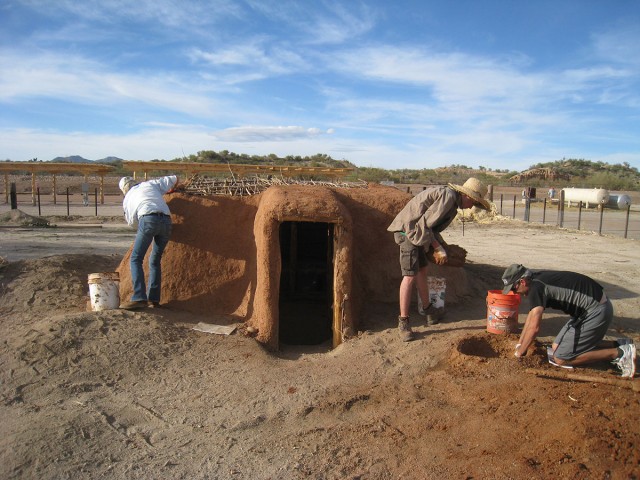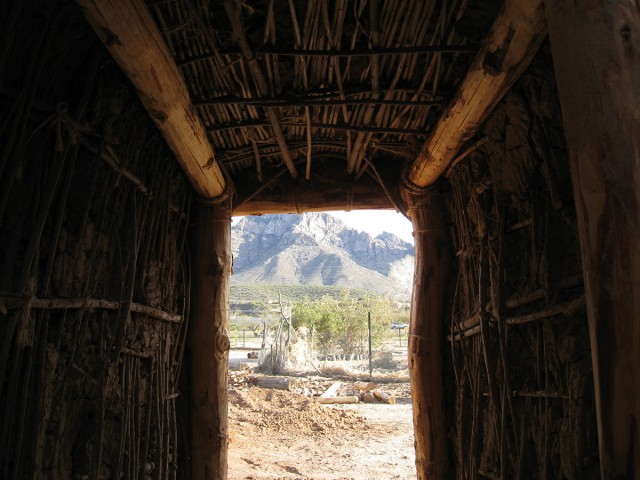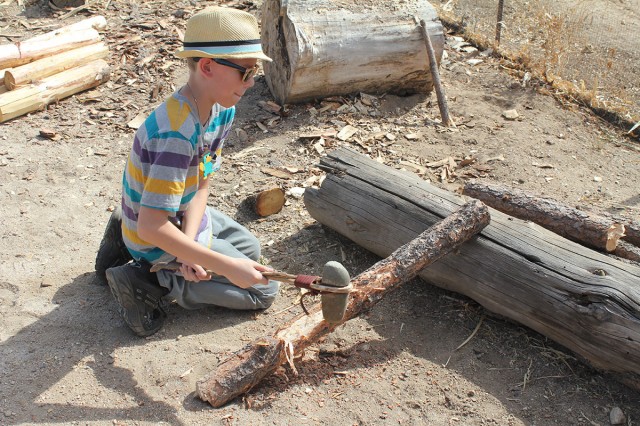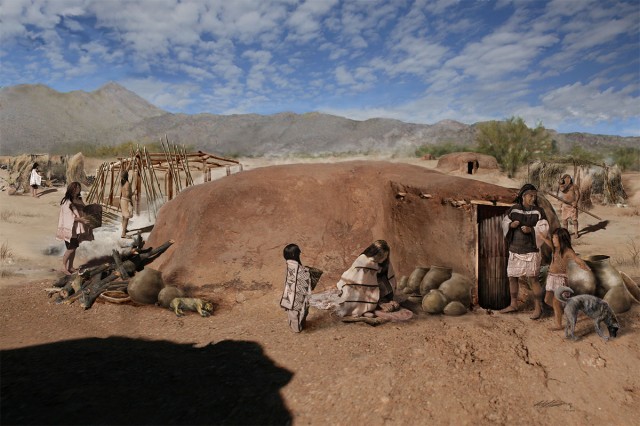- Home
- >
- Preservation Archaeology Blog
- >
- A Visit to the Steam Pump Ranch Pithouse
Today’s guest author is Nanette Weaver, Arizona Site Steward Regional Coordinator for the Lower and Middle San Pedro River valley.
Have you ever stood looking at the vague outline of a Hohokam pithouse and tried to visualize what the whole house looked like? I know that I, for one, as a Site Steward, have wished I could go back in time to join in the building of a pithouse with the tools I see in museums and at the sites I monitor. Viewing Archaeology Southwest’s image gallery of the initial framing construction underway at Steam Pump Ranch in Oro Valley made me realize one thing: I wanted more!
One Thursday, on the way to get groceries, I found my car turning into Steam Pump and heading toward the Hohokam garden I could see from the road, my eyes, searching for the pithouse. Suddenly, rising up out of nowhere, was a lump of mud with a door. Next to the lump were two smiling muddy men smearing hands full of fresh mixed adobe mud on the most amazing house I’d ever seen.

I realized I had picked the perfect day. Allen Denoyer and his associate were working on the mudding process, making the adobe in a small pit by the front door. They let me have a go at hefting the ax that cut down the logs used in the interior framing. Allen had even gone up Mt. Lemmon to get one ridgepole per archaeologist Henry Wallace’s theory that every home in Honey Bee Village had a piece of high-elevation wood from Mt. Lemmon (editor’s note: more on that in an upcoming post).

The knowledge I gained in that brief visit was wonderful. I no longer wonder how anyone could cut down a tree with such a blunt tool as a stone axe. Now I have a grasp of the process. I don’t look at those blunt axes in quite the same way. I also know a little of how it feels to swing a heavy rock fitted with a wooden handle against a tree, again and again. I have an even greater respect for the people that built these fantastic, ergonomically sound shelters. Although not fully mudded over when I went inside, I could see the digging marks, the way the poles were lashed, and the ledge that ran about two feet high around the room. Such a ledge would hold bowls for food, other stored things, and rolled-up woven sleeping mats, leaving most of the floor space open, like a big camping tent.

I see the faint markings of the pithouses at the sites I visit in a different way. They stand out suddenly against the desert floor, and I can visualize the groupings of adobe “domes” gently rising up around me. Not so high as to block my view—but just enough to give me the feeling of a community.

I’m looking forward to going back to see more of the construction as the hearth goes in and the interior is finished. I hope to learn so much more about these people whose places I visit and protect.
One thought on “A Visit to the Steam Pump Ranch Pithouse”
Comments are closed.
I am an assistant Scoutmaster for Troop 294 that meets at the La Cholla Airpark. We saw your flyer at the site stewards tent at the Archaeology day at Catalina State Park.
I was wondering about a hands on opportunity about learning about proper site excavation etc.
We have a requirement to do some sort of mock dig and wonderd if you had this as an option in your program